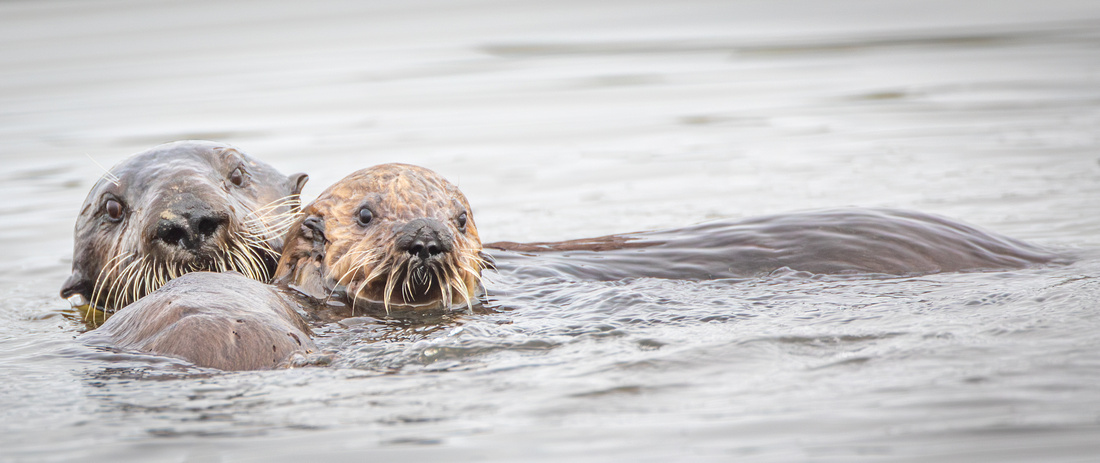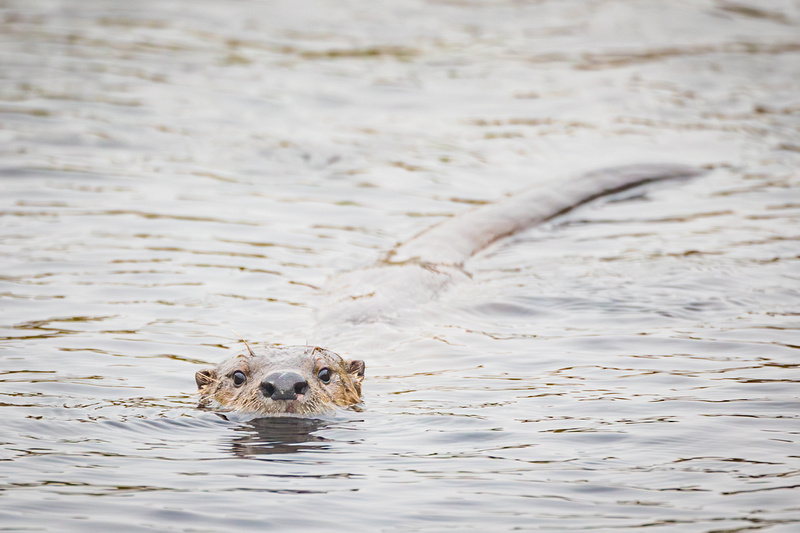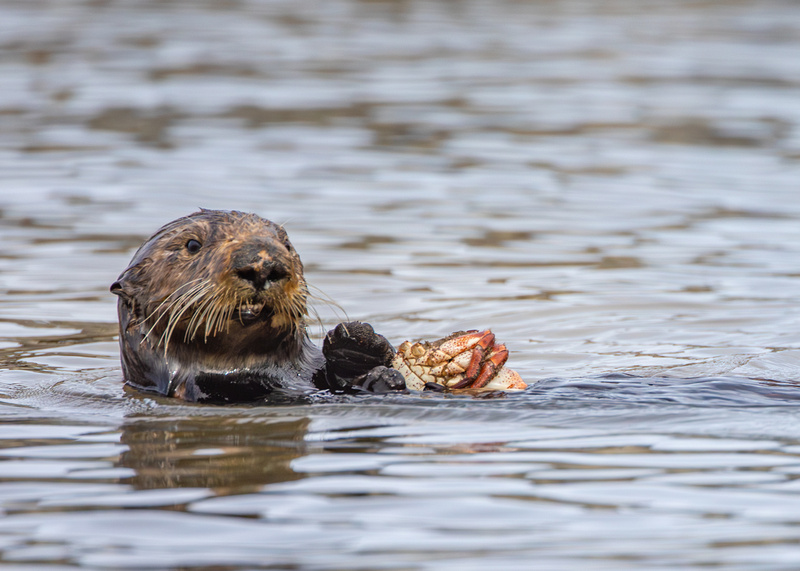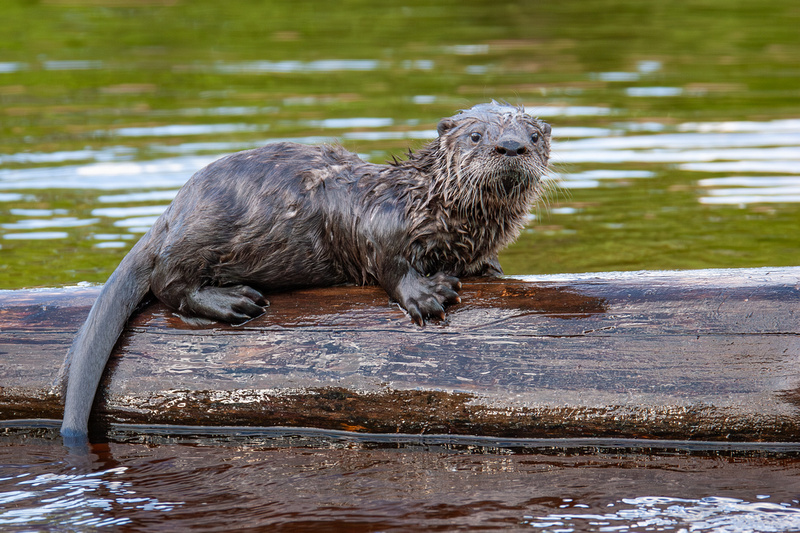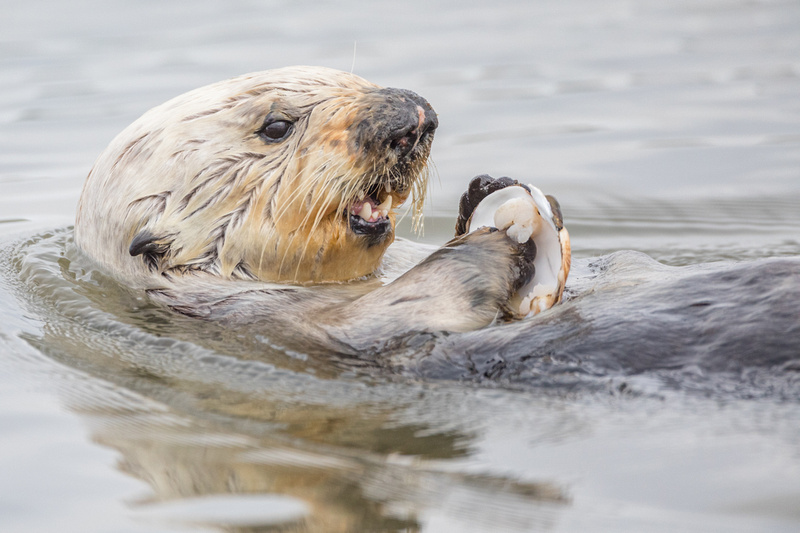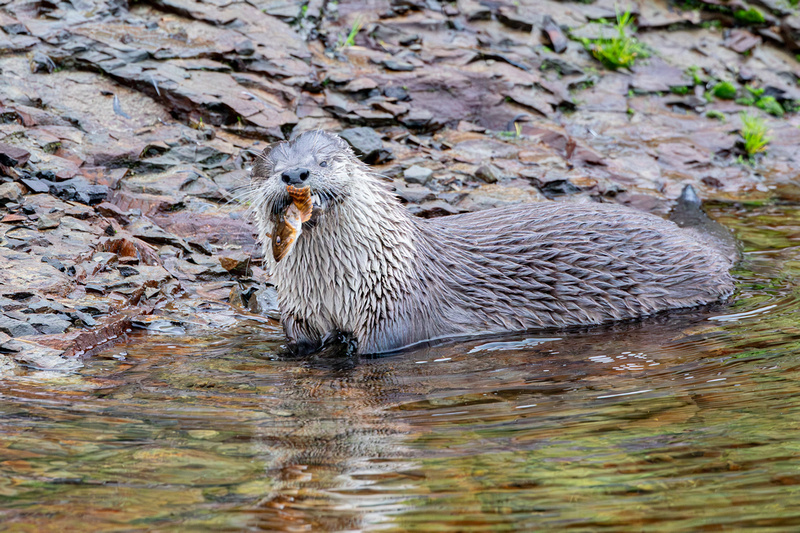Species Highlight: Otters
Species Highlight: Otters
Text and photos by Heather Cline
|
Did you know there are 13 different species of otters around the world? The United States is home to 2 of these species: the sea otter and river otter. If you have ever had the pleasure of watching either of these species in action, you know they can put on a quite a show between their grooming, hunting, and playing activities. I'm going to stray from my usual format covering a single species and list some fun facts about both species here. |
|
|
1. The word "otter" is from Old English, and stems from the root word for water: "wodr". Kind of makes sense considering how much time they spend in the water.
2. Sea otter pups are born with buoyant fur which makes them unable to dive down for food, so they are dependent on their mother for food until they reach approximately 13 weeks old. |
River otter |
|
3. River otters are known for their playful behavior, including mud sliding, snow sliding, and wrestling.
4. Sea otters have the thickest fur of any animal. Their fur contains between 600,000 to 1,000,000 hair follicles per square inch which is critical for warmth because they don't have a blubber layer like other marine animals. |
|
5. River otters can hold their breath for 8 minutes! This skill is especially helpful when foraging for food underwater.
6. Sea otters are a keystone species, which means they are critical to how the ecosystem functions because they have large-scale effects on the communities in which they live. For example, along the Pacific Coast, sea otters keep control the sea urchin population, which in turn reduces grazing pressure on kelp. |
River otter |
|
Sea otter with clam |
7. Although sea otters tend to live in larger groups, river otters are more solitary, except for females with their young.
8. Sea otters use tools to crack open hard-shelled prey - and they store their tools in a loose patch of skin under their armpit. |
|
9. Otters are the largest member of the weasel family and are built for swimming, reaching speeds of 8 mph in the water and diving as deep as 60 feet.
10. The California sea otter has been listed as a threatened species since 1977, facing a high risk of extinction. The most significant contributions to this are climate change, shark bites and limited range. The southern sea otter population has grown slowly since receiving federal protections in the 1970s, fluctuating around 3,000 in recent years. |
River otter with fish (believed to be a prickly sculpin) |
I hope you enjoyed this post, and if you would like to see any of my other otter photos, please check out my gallery.

